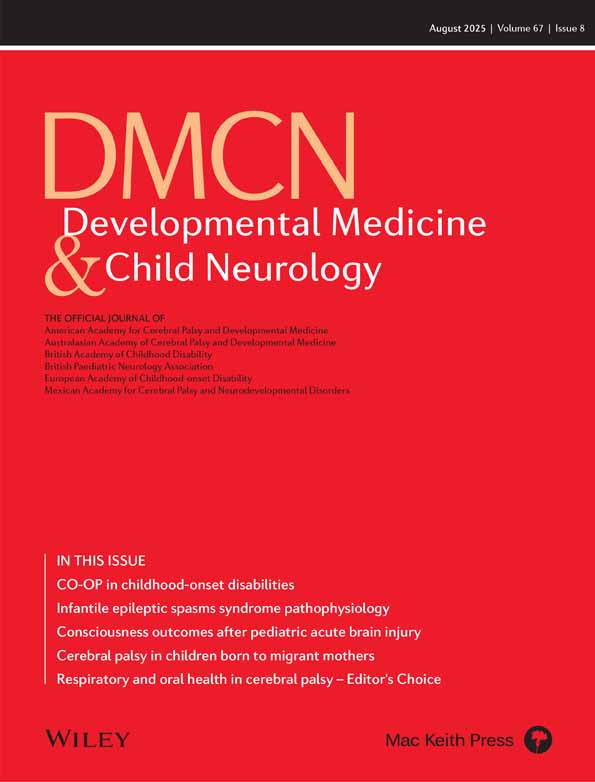Comparative study of inter- and intrahemispheric somatosensory functions in children with partial and complete agenesis of the corpus callosum
Abstract
Inter- and intrahemispheric somatosensory functions were evaluated in blinded tests of 11 children with partial and complete agenesis of the corpus callosum (age range 2 years 8 months to 11 years 9 months) and compared with those of age- and sex-matched control individuals both normally developing and with neurological impairment. Tests included uni- and bimanual measures of stereognosis, haptic visual discrimination, kinaesthesis, and texture matching. Children with callosal absence displayed significant difficulties with many somatosensory functions, but most deficits were no greater than those of the children who had neurological dysfunction and an intact corpus callosum. Children with callosal absence, however, had significantly greater difficulty with bimanual texture matching, seemingly because this task required refined spatial interpretation of somatosensory input. Response times for the individuals with callosal absence were significantly greater than those for control participants with neurological impairment on several tasks in which overall accuracy of performance among groups did not significantly differ. These findings suggest that children with agenesis of the corpus callosum may have less efficient and slower processing capacity for certain types of somatosensory information. Possible compensatory mechanisms are discussed.




